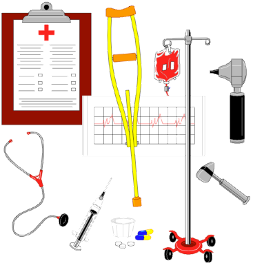Jump To:
Resources
Author Info
Betty A. Hagman
Ophthalmologist
Albuquerque, NM
 What is a medical doctor?
What is a medical doctor?
A medical doctor is a practitioner of the healing arts. She examines patients, analyzes the results of laboratory tests, diagnoses and treats the patient’s medical condition, prescribes drugs, and advises the patient about methods of preventive health care. A medical doctor differs from a pure scientist in that medicine is a marriage of the biological sciences and the humanities. An M.D. must apply her scientific knowledge in the context of patient care.
What makes a good medical doctor?
A doctor is broadly trained in the sciences and the scientific method. A good M.D. must have an interest in and an understanding of how the human body functions. She should have a desire to work with people as well; compassion and honesty are as important as inquisitiveness and scientific aptitude. As in all fields, common sense, too, is helpful. The good doctor listens to the patient and is aware of the patient’s feeling about the medical problem, not just the problem itself. She must be able to recognize what are the most important questions to ask a patient and what are the best tests to perform to arrive at a diagnosis.
What is life as a medical doctor like?
Life as a medical doctor can vary depending on your field of practice. A general practitioner, internist, pediatrician, or obstetrician-gynecologist provides primary care of patients. Specialists such as ophthalmologists (eye physicians and surgeons), otorhinolaryngologists (ear, nose, and throat doctors), orthopedists (bone doctors), endocrinologists (gland and hormone specialists), and dermatologists (skin doctors) diagnose and treat problems specifically related to their areas of specialization.
Depending on the specialty, you may have regular office hours or you may receive emergency phone calls in the middle of the night. As a doctor, you can have an individual practice or a group practice, or you can do all your medical work at a hospital. Some M.D.s are totally involved in patient care, others in teaching at a medical school. Many combine the two and spend part of their time teaching medical students, interns, and residents.
Another important function of an M.D. is to serve on various panels with colleagues and other members of the medical profession and on committees such as the medical malpractice panel of the state medical society or on hospital committees, such as patient care or cost containment. A large part of your time must be spent in continuing education to maintain your license as an M.D. as well as certification in your area of specialization. The field of medicine changes so rapidly that you must keep up with the current state of the art in order to provide up-to-date care for your patients.
The advantages of a career in medicine can include the satisfaction in the development of a trusting and lasting relationship with a patient. A doctor is often involved in life-and-death type responsibilities; coping with the severe illness or death of a young child can be very wearing.
How do I become a medical doctor?
To become a medical doctor, you need a college education and graduation from a school of medicine. Medical school generally takes an additional four years beyond college. Specialization takes further training. In ophthalmology, for example, residency takes three additional years of training and, until recently, a year of internship prior to the residency. Other specialties, such as surgery, can require six years or more.
All doctors must be licensed by their respective state boards of medical examiners. Nevertheless, in most states renewal of licenses is a mere formality. New Mexico and several other states, however, make renewal of the license to practice medicine contingent upon completion of a prescribed amount of accredited postgraduate study in medicine.
You must take many science courses, particularly in the biological sciences, in both high school and college. Nevertheless, there are qualities besides scientific knowledge that make a good doctor. You can run the risk of becoming so intent on making good grades in the sciences that other areas are neglected. Be realistic and understand that competition for entry into medical school is stiff. A broad education in high school is advisable before you must begin to concentrate on the required courses in college. High school courses should include English, mathematics, biology, and chemistry. Since requirements differ from school to school, determine the various college courses necessary for admission to different medical schools.
What/where are the jobs?

More doctors are needed in the area of family practice or general practice, i.e., the area of “primary care.” Openings in the specialties, in general, are less common. Small towns are more in need of doctors than large cities; the South and Midwest are more in need than the east and west coasts. Salaries are extremely variable depending on location, type of practice, and type of specialty.


